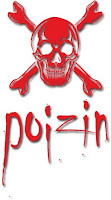2010 Vintage/Harvest Report from Ridge Vineyards
The Fall newsletter from Ridge Vineyards arrived via email today and contained 2 great articles on the 2010 Harvest. One from the prospective of David Gates, VP of Vineyard Operations and the other from John Olney, VP of Winemaking. jr
Zinfandel 2010: A Rough Year on the North Coast
David Gates, VP Vineyard Operations
What happens in the vineyard is a cycle that follows the seasons. Pruning, weed and disease control, forming the canopy, managing crop size, frequent sampling, harvest, vacation, repeat. What keeps it interesting (and me sane) is the continuous dance, the endless variation of each unique season. We strive for balance in our vineyards and in our wines, constantly adjusting and advancing viticultural practices in the estate vineyards so the grapes always have the best chance to become great wines. Mother Nature is very good at keeping us on our toes, as we (and every other zinfandel grower on the North Coast) were forcibly reminded in 2010. Keeping vines balanced is simple in theory, but nuanced in practice. A balanced vine has enough leaves to ripen its crop without undue stress. Some blocks—like Lytton Estate West 36 (planted in 1953) and the old vines at Lytton Estate East (planted in 1902 and 1910) mostly balance themselves each year. All our young vines tend to set more than they can ripen; we are always dropping fruit in these blocks—as much as half the crop in some years. In warm, dry years, we encourage the vines to grow more leaves. In wet, cool years we spend quite a bit of time selectively removing shoots and leaves to bring the vines into better balance.
In our Sonoma vineyards, 2010 started late and cool. It stayed that way until the last week of August, when we had the infamous “heat event,” two very hot, dry days that scorched half the zinfandel clusters just before they turned color. Before this “event,” we were working toward a late, cool harvest, like 1991, 1993, or 1999...thinning a bit more than normal, keeping the leaves healthy, opening up the canopies for more sun, waiting for veraison. Afterward, we went into a higher gear, assessing the damage and working with the remaining crop to ensure it would ripen fully, and make it to the winery as sound, clean fruit. Right after the event, we made one—then four more—triage passes through the zinfandel vines to remove clusters that were completely destroyed. It quickly became apparent that we would have to throw all our resources into a more intensive, selective harvest that ever. We always spend time, effort, and money on making sure only the best grapes from each block are taken to the winery; unripe, overripe, or damaged clusters are left behind. For zinfandel, this work took on another dimension in 2010—we sorted in both vineyard and winery, trying to bring the same selectivity to a table wine that is applied each year to late-harvest wines in Alsace, the Rheingau, or Sauterne. Literally berry by berry, partial cluster by partial cluster, we sorted through the blocks so that only the finest fruit made it into the fermentors. It was good that we had a large, dedicated crew in 2010; we needed all hands on deck to make a difficult harvest the success it turned out to be. The limited amount of beautiful fruit that reached the fermentors was wonderfully intense, with the best acidity we’ve ever seen in zinfandel. Harvest 2010 showed that having your vines in good balance isn’t always enough. You also need an experienced crew, and the ability to adjust quickly to whatever might come your way. It is a lesson well learned...and one I’d love never to learn again.
John Olney, VP Winemaking - Lytton Springs
What, after all, do you do when a sudden heat wave vaporizes forty to sixty percent of the grapes on the vines in a matter of hours? The answer is simple, the solution laborious. You drop the scorched clusters and sort the rest. Each cluster of grapes must be meticulously examined and all damaged grapes removed. While the vineyard work was an uphill battle all season, winemaking for 2010 had both challenges and some pleasant surprises. Besides zinfandel, our Sonoma County vineyards are planted to other complementary varietals; chief among these are petite sirah and carignane. Since they were far less affected by the heat than zinfandel, they were present in higher proportions than usual. In a traditional block at Lytton Springs, for example, fifteen percent of the vines interplanted with zinfandel are petite sirah—but the percentage of that varietal harvested in 2010 was at least two times the norm. This meant extra attention had to be paid to the fermentations during daily pump-overs, in order not to overextract the abundant tannins characteristic of petite sirah. Some lots had to be pressed early, which by separating the fermenting juice from the grape skins and seeds, maintains the full, sumptuous quality of the young wine, preventing it from becoming dry and astringent. In the vineyard, after the heat-damaged fruit had been removed, the remaining fruit ripened very quickly. This had an unexpected consequence: the vine accumulated sugar while retaining its natural acidity. Typically, as sugar increases in the grape, acidity decreases. In warm areas such as Sonoma County, therefore, lack of acidity is a more common problem than lack of sugar. From the moment the first zinfandel arrived from block 25 at Lytton West on September 3, it was apparent that 2010 was one of those ideal vintages in which sugar and acid are in natural equilibrium. The color alone is different. There is a luminosity to the 2010 zinfandels that at once reminds you of a hard-fought battle—and a prize worth all the pain.










